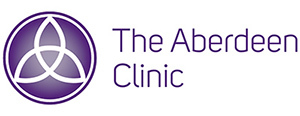It is an unfortunate fact that, as retirement looms, we are likely to make more use of the healthcare system.
For many, this coincides with a need to decide whether to continue to pay for the private medical insurance (PMI) that had always been available through work. Will this provide the best chance of staying fit, healthy and active? Or given that insurance premiums are rising all the time is it an unnecessary expense? After all we’ve all contributed to the NHS throughout our working lives!
The NHS dominates healthcare in the UK and there is no doubt that compared with other systems worldwide, the UK’s is one of the most efficient (compare the US situation) but the system is creaking! This is partly because of increasing demand but also, post 2008, due to rigid spending constraints.
For a consumer of healthcare this means that although we can still access the best emergency care, cancer services and primary healthcare without having to pay we may have to accept longer waits to see a doctor or for investigations. For routine procedures waiting lists are growing and some operations are no longer offered on the NHS. Although this might not be life threatening it may interfere with your normal activities and things you would want to do.
What of the alternative? Does private healthcare offer value for money? Unfortunately traditional private healthcare in the UK is relatively expensive. A typical PMI premium in the UK is twice that of an equivalent in Spain and 80% higher than in Australia. The Competition and Markets Authority concluded that the dominance of a few major hospital groups had adversely affected the UK private healthcare market.
Fortunately, since this report there have been a number of newer initiatives and alternatives to traditional private healthcare. The concept of value based healthcare in the private sector has been driven forward by clinics such as the Aberdeen Clinic (TAC).
Ken Park, clinical director of TAC, explains “there is an increasing realisation that many procedures don’t require hospital stays and can be performed as an out-patient on a walk-in-walk-out basis. For example, patients can have minimally invasive procedures for varicose veins and walk out of the clinic within 30 minutes of treatment, the same is true for lots of minor surgical procedures such as hernia repairs – this not only reduces the costs it also makes the procedure more accessible to more patients.” This is very much the trend in many healthcare systems throughout the world. The important thing is to ensure that the outcomes are not in any way compromised.
Chas Ogilvie director of nursing at TAC expands “The ethos at the Aberdeen Clinic is to ensure everyone gets the same high standards of care we would expect ourselves. Our continuous audits show that this is the case with excellent clinical outcomes and high levels of patient satisfaction”.
It is important to ensure that patients are treated in the right place for their particular problem. New technologies that facilitate care pathways are helping with this. “The use of a cloud based IT platform has allowed us to ensure patients are signposted to the right person/ place straight away.
In Manchester we were able to ensure that patients with back pain needing to see a specialist did so with no delay, whilst the majority of patients were seen and treated very successfully by a physiotherapist. It meant that the service was cost effective and very efficient – benefiting both NHS and private patients alike” comments Amir Khan of eHealth Solutions who are working with TAC to introduce similar systems in other specialties.
To get the most from such initiative requires a change to a more integrated care system. Ken Park feels “the traditional model of private health care has limited its application in the UK. At the Aberdeen Clinic we don’t compete with the NHS but rather hope we complement it, for example our diagnostic endoscopy service provides a very efficient service with no wait. This means we can provide a cost effective solution to the patients who want to go privately but also ease the NHS waiting list burden.”
If private healthcare is to be a part of an individual’s future plans it is important it is affordable. The standard PMI premium goes up with age and it is not unusual to be faced with a yearly premium in excess of £1,500. A number of companies have come up with schemes to reduce this depending upon consumer’s requirements. The important thing is to determine what you want and look at each of the insurance providers as the premiums and cover do vary dramatically.
Perhaps the best way of insuring your health though is to look at your lifestyle and assess how this might impact on your future health. Stopping smoking, reducing weight, drinking sensibly and eating healthily are likely to be the best health investments you can make.
To find out more visit our website here.


